CMMC Practice SI.L1-3.14.1 – Flaw Remediation: Identify, report, and correct information and information system flaws in a timely manner.
Links to Publicly Available Resources
This document provides assessment guidance for Level 1 of the Cybersecurity Maturity Model Certification (CMMC). In this blog, Kaseya will discuss patch management policy best practices and explain how they contribute to a better patching environment for large and small organizations alike. This NIST Special Publication is designed to provide guidelines for BIOS protections in server-class systems. This NIST Special Publication is designed to provide a comprehensive set of security recommendations for the current landscape of the storage infrastructure. This NIST Special Publication is designed to assist organizations in understanding the basics of enterprise patch management technologies. The link below is an example from North Carolina State University of a Security Patching Standard. This SANS whitepaper examines the role of project management in building a successful vulnerability management program. This SANS whitepaper looks at how a vulnerability management process could be designed and implemented within an organization. This SANS whitepaper presents one methodology for identifying, evaluating and applying security patches.
Discussion [NIST SP 800-171 R2]
Organizations identify systems that are affected by announced software and firmware flaws including potential vulnerabilities resulting from those flaws and report this information to designated personnel with information security responsibilities. Security-relevant updates include patches, service packs, hot fixes, and anti-virus signatures. Organizations address flaws discovered during security assessments, continuous monitoring, incident response activities, and system error handling. Organizations can take advantage of available resources such as the Common Weakness Enumeration (CWE) database or Common Vulnerabilities and Exposures (CVE) database in remediating flaws discovered in organizational systems.
Organization-defined time periods for updating security-relevant software and firmware may vary based on a variety of factors including the criticality of the update (i.e., severity of the vulnerability related to the discovered flaw). Some types of flaw remediation may require more testing than other types of remediation. NIST SP 800-40 provides guidance on patch management technologies.
Further Discussion
All software and firmware have potential flaws. Many vendors work to remedy those flaws by releasing vulnerability information and updates to their software and firmware. Contractors must have a process to review relevant vendor notifications and updates about problems or weaknesses. After reviewing the information, the contractor must implement a patch management process that allows for software and firmware flaws to be fixed without adversely affecting the system functionality. Contractors must define the time frames within which flaws are identified, reported, and corrected for all systems. Contractors should consider purchasing support from their vendors to ensure timely access to updates.
